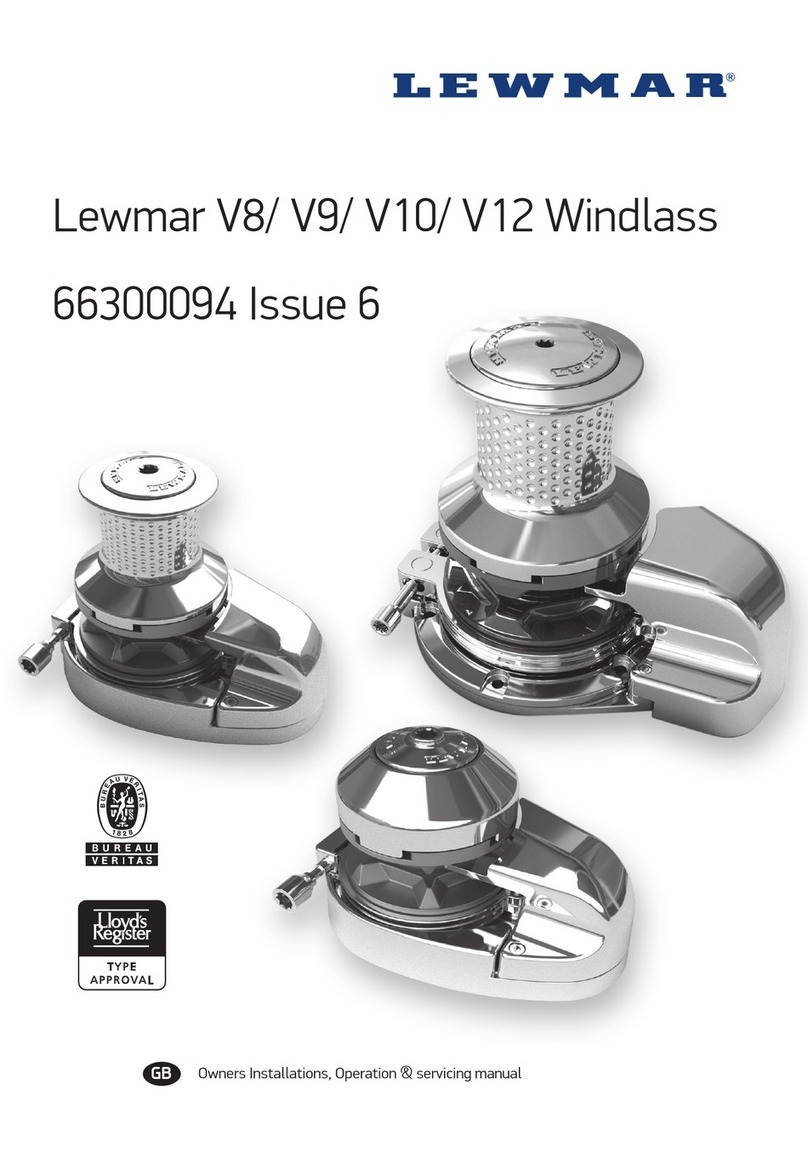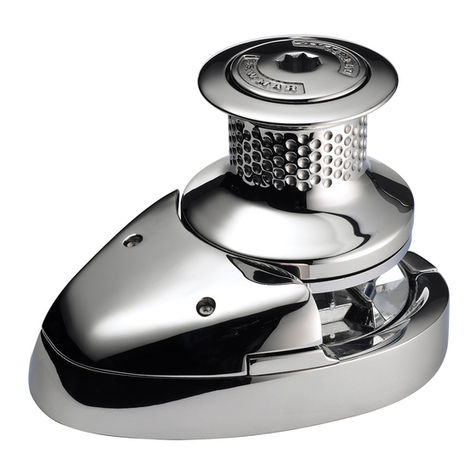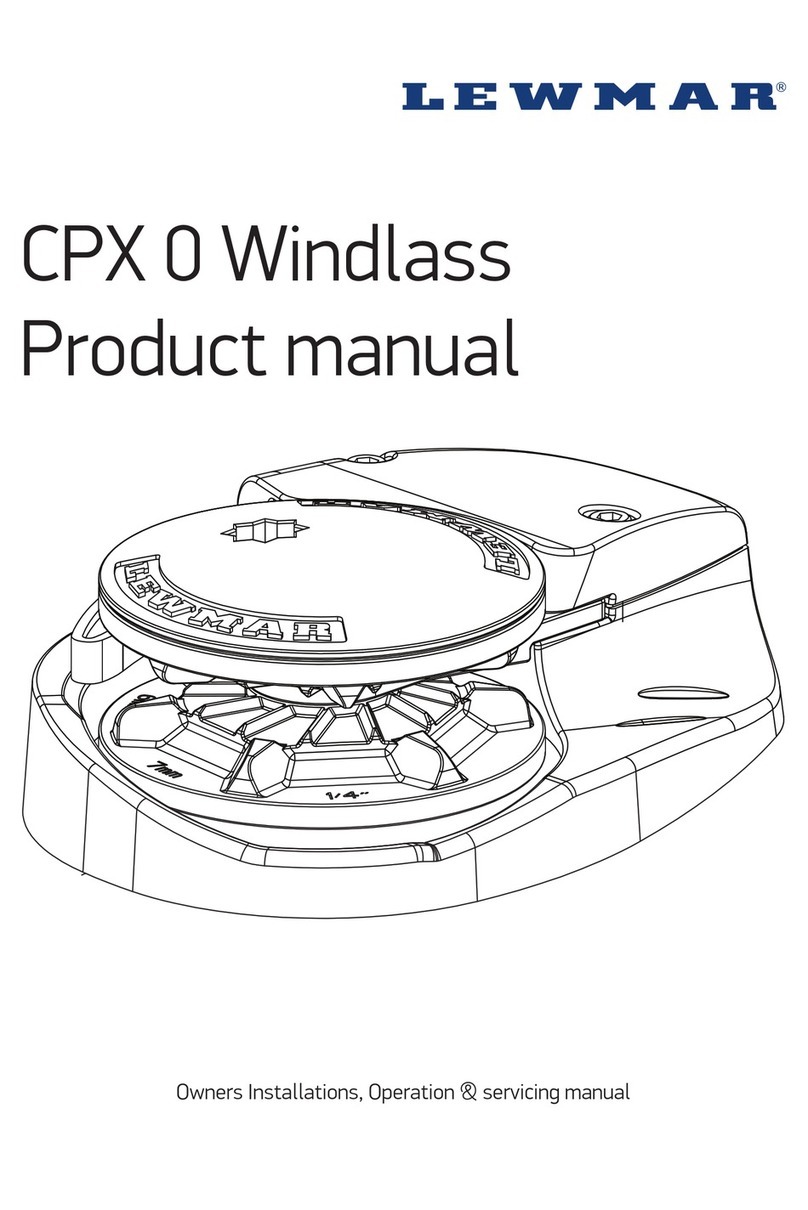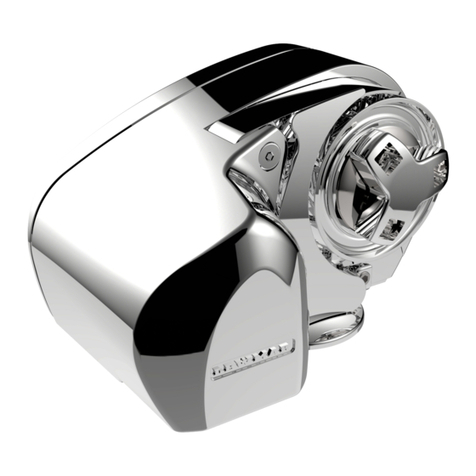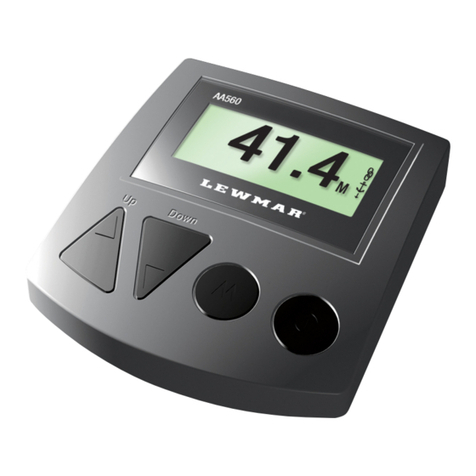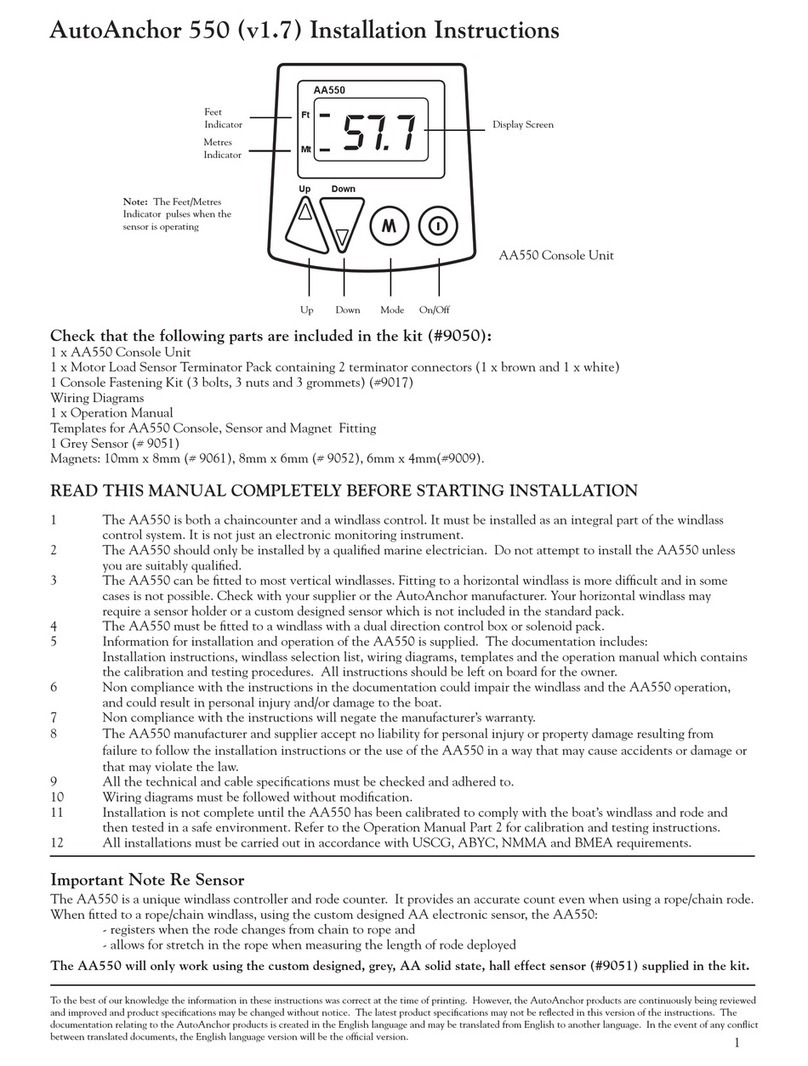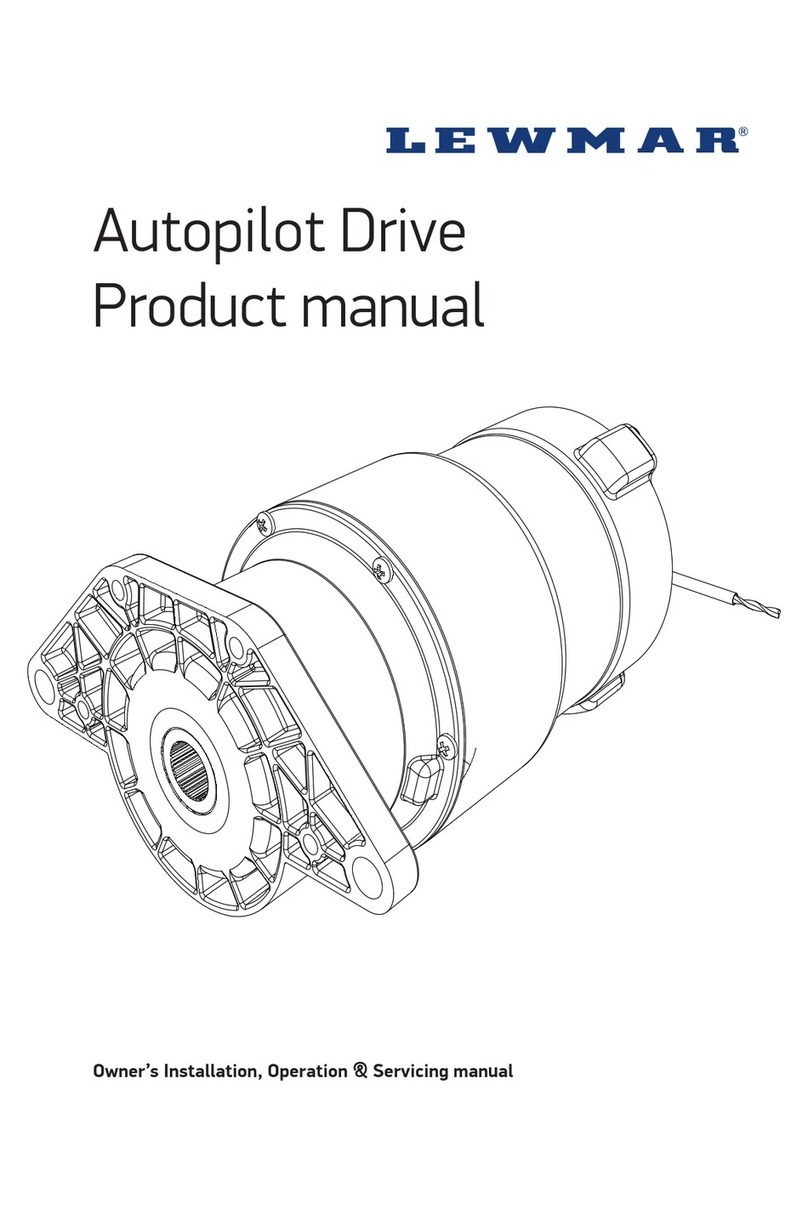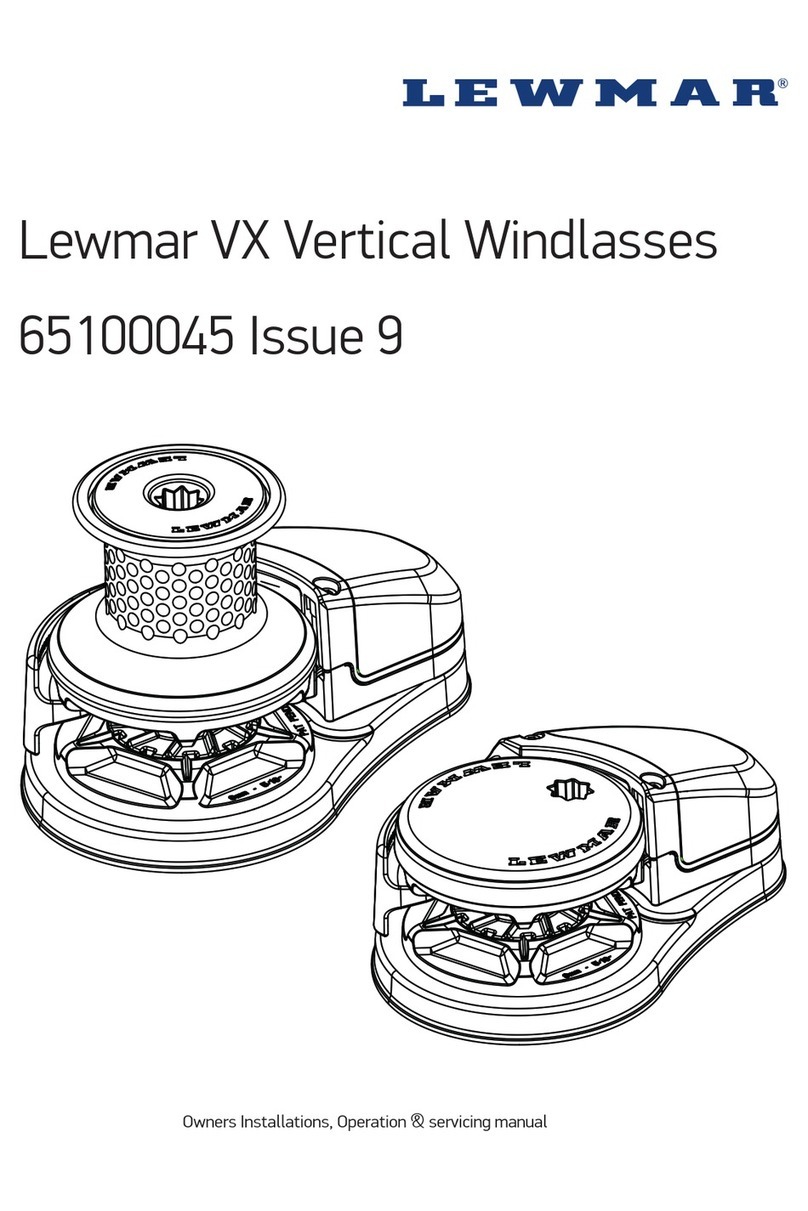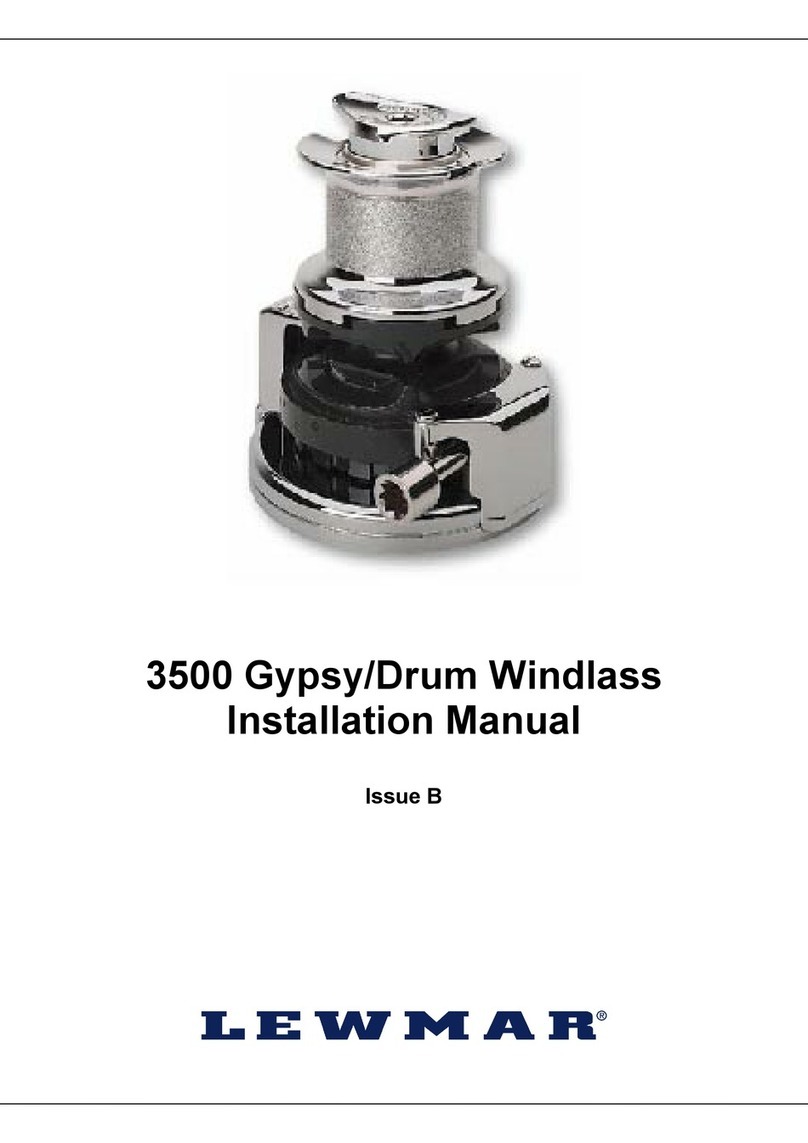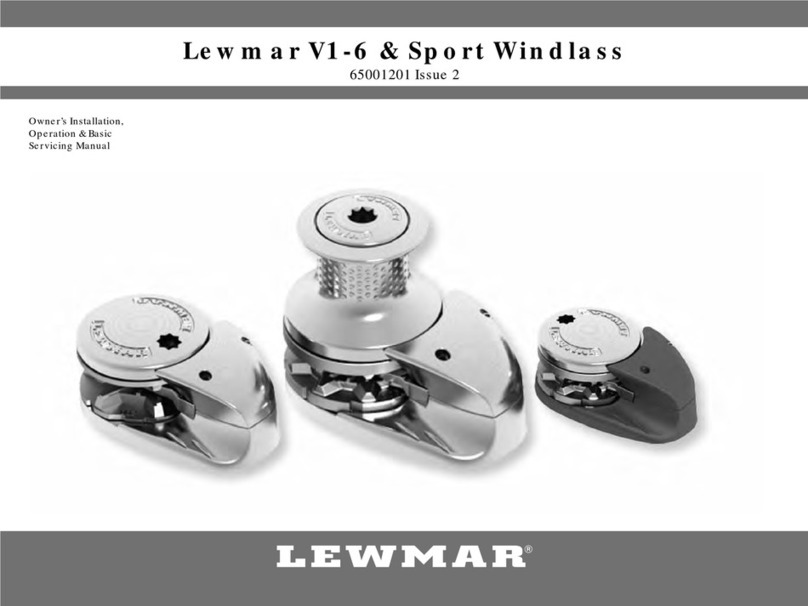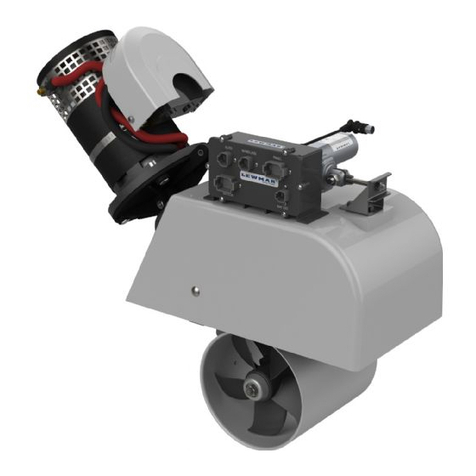
THRUSTER INSTALLATION
The 300 SVT is supplied on an aluminium base plate ready for mounting. The
installer is responsible for the watertight integrity of the installation. As a general
rule, the Thruster is installed with the propeller facing to starboard.
When lifting the Thruster unit from its packing case, ensure that adequate lifting
strops are used, and the unit is not lifted by its lead screw assembly or propeller
shroud. When moving the Thruster, ensure that the base plate surfaces are
protected against potential damage.
Once the Thruster seating support has been fabricated and a suitable hole has
been cut in the hull, the Thruster can be installed. Seat the unit down on a thin
gasket of closed cell neoprene or a suitable sealing compound, and bolt down
using M10 bolts.
The 300 SVT Thruster is supplied in the retracted position for ease of
transportation. The Thruster will have to be lowered once located, to have the
hull faring fitted. To lower the Thruster, either energise the raise / lower motor or
by using the mechanical lead screw. To lower mechanically, remove the lead
screw lower locking bolts (M6) from the base plate, and wind the top of the lead
screw with a suitable socket or spanner. Taking care not to damage the limit
switches (Please see Manual Raise & Lower of Thruster).
At the stage of the installation, the raise and lower power is unlikely to be
connected. When raising and lowering the unit, take care not to 'Bottom Out' the
limit switches potentially damaging them.
The lower limit switch is factory set to stop the Thruster just before it hits its
mechanical end stop, and should not be adjusted. However, the upper limit
switch can be set once the hull fairing piece has been fitted to the shroud.
Usually, the hull piece that has been cut out, would be re-used to provide the
Thruster closing plate. This can be glassed using webs, directly onto the
propeller shroud to form a solid structure. If additional bolts are being used,
ensure that the bolt heads do not foul the propeller tips inside the shroud.
A landing or register should be moulded into the hull cut out, to allow the hull
closing piece to 'locate' when the Thruster is fully retracted. This will also
eliminate water flooding the box at high pressure potentially damaging the
gasket / seal when the vessel is pounding at sea.
